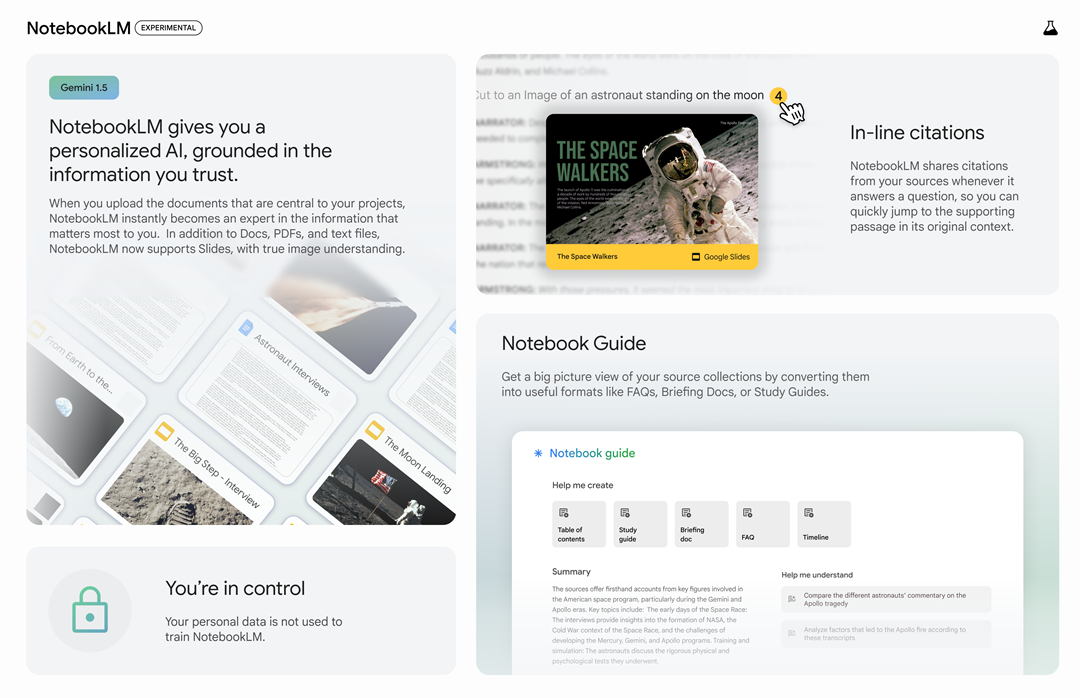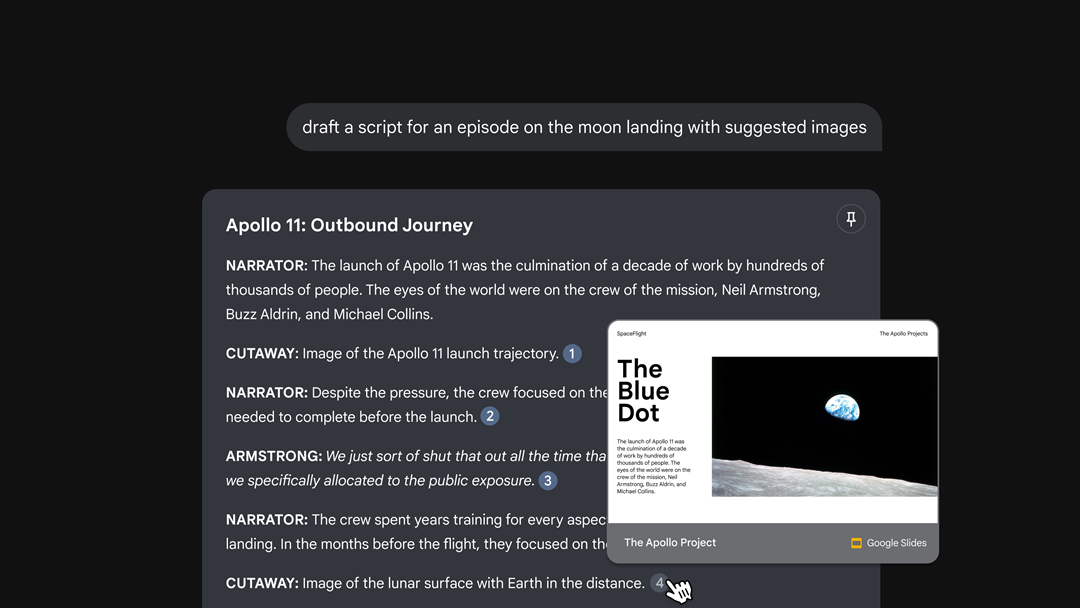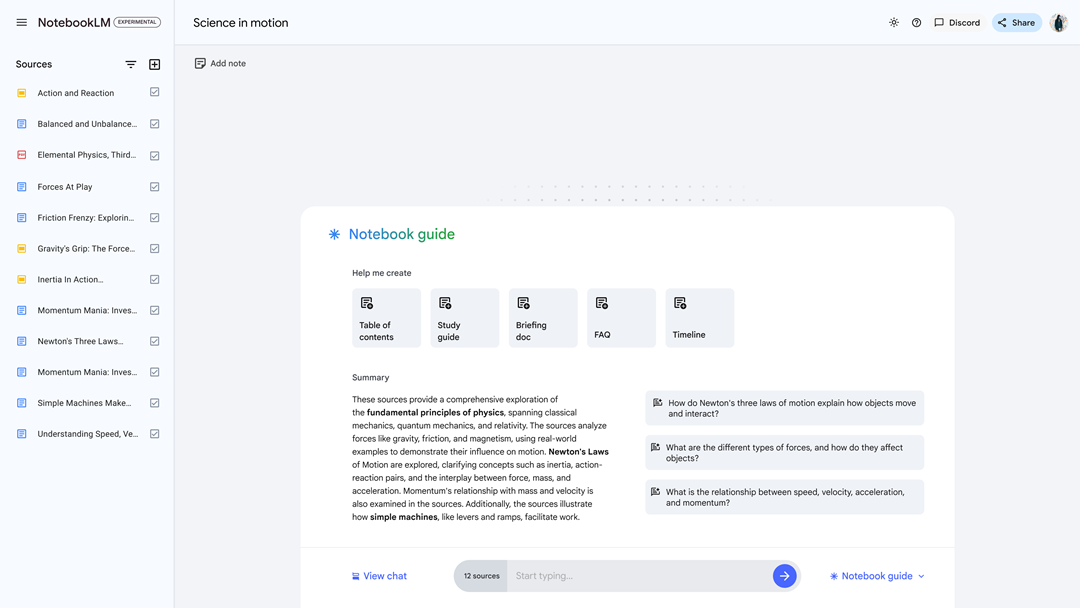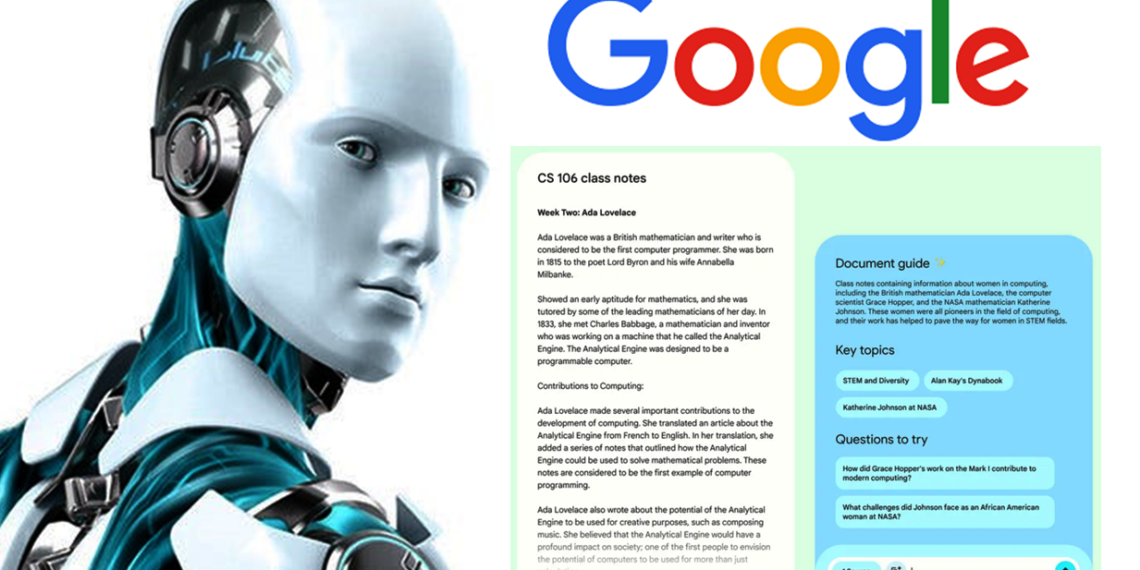Quick look:
- NotebookLM now supports Google Slides and web URLs as sources, along with Google Docs, PDFs and text files.
- Inline citations now take you directly to supporting passages in your sources, so you can easily fact-check the AI response or dive deeper in the original text.
- Notebook Guide gives you a high-level understanding of your sources by converting them into useful formats like FAQs, Briefing Docs, or Study Guides.
Last summer, Google introduced NotebookLM, an AI-powered research and writing assistant.
Today, the global tech giant has released an upgraded version of NotebookLM — now using Gemini 1.5 Pro — to over 200 countries and territories around the world.
Commenting, Steven Johnson, editorial director, Google Labs & Raiza Martin, Product Manager, Google Labs, said that the goal from the beginning with NotebookLM has been to create a tool to help you understand and explore complex material, make new connections from information, and get to your first draft faster.
“You can upload sources — your research notes, interview transcripts, corporate documents — and instantly NotebookLM becomes an expert in the material that matters most to you”.
“Thanks to Gemini 1.5 Pro’s native multimodal capabilities, you can now ask questions about images, charts and diagrams in your Slides or Docs. NotebookLM will even include citations to images as supporting evidence when relevant”, Johnson said.
Case studies from real users

Johnson said the team has been amazed by the range of uses that people are finding for NotebookLM.
“Because NotebookLM was developed in close partnership with authors, students, and educators, we’ve seen many early adopters integrate the product into research and writing workflows. Best-selling author Walter Isaacson has been working with NotebookLM to analyze Marie Curie’s journals for research on his next book. We’ve seen similar enthusiasm from documentary and podcast researchers who need to sift through complex archives to generate scripts or story ideas”.

But the combination of Gemini 1.5 Pro’s advanced reasoning abilities and NotebookLM’s source-grounding architecture has unlocked many other potential applications:
- In local governance, Thomas Gaume created a hyperlocal newsletter, aggregating city ordinances, land use data, zoning codes, and council meeting minutes. NotebookLM empowered him to be a “one-person newsroom and publisher.”
- NotebookLM’s ability to summarize and adapt interview transcripts is helping users identify patterns and themes in raw transcripts, saving hours of manual analysis. For example, consultant Victor Adefuye uses NotebookLM to analyze sales call transcripts for targeted training and coaching.
- Nonprofits have deployed NotebookLM to help them identify needs in underserved communities and organize information for grant proposals.
“We’ve also noticed some less than expected and playful use cases with the help of our 14,000 member Discord community, including:
- Role-playing game enthusiasts use NotebookLM to manage detailed descriptions of fantasy worlds in games like Dungeons and Dragons”, Martin said.

Getting started
If you’re new to NotebookLM, getting started is easy:
When you first access NotebookLM, you’ll create a notebook and upload documents for a specific project or deliverable.
At that point you can read, take notes, ask questions, organize your ideas, or ask NotebookLM to create automatic overviews of all your sources—a study guide, for example, or a table of contents.
Whether it’s being used to build imaginary worlds, write bestselling biographies, or help salespeople find new customers, NotebookLM has given Nigerian users powerful tools for making connections and generating insights out of large collections of documents.






